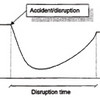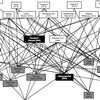 Resilience Adviser or Scaremonger? What am I really? That is what started to ask myself after I came across an article written by Frank Furedi the other day. In the article, Furedi, a Professor of Sociology at the University of Kent, highlights the issue of vulnerability-driven policies and how possibilistic (worst likely) risk thinking has dethroned probabilistic (most likely) risk thinking. Why is it that we fear so much?
Resilience Adviser or Scaremonger? What am I really? That is what started to ask myself after I came across an article written by Frank Furedi the other day. In the article, Furedi, a Professor of Sociology at the University of Kent, highlights the issue of vulnerability-driven policies and how possibilistic (worst likely) risk thinking has dethroned probabilistic (most likely) risk thinking. Why is it that we fear so much?
Cry wolf?
The Merriam-Websters Dictonary defines scaremonger as someone who is inclined to raise or excite alarms, especially needlessly. Well, that doesn’t fit me, does it? The Oxford Dictionary defines scaremonger as a person who spreads frightening or ominous reports or rumours. Perhaps a bit more like what I do every day. Reports yes, but rumours are a no-no. Finally, the Collins Dictionary defines scaremonger as a person who delights in spreading rumours of disaster. Well, I’m definitely not a rumour spreader, but I am perhaps overly concerned with – and some of my colleagues may even think obsessed with – thoughts of possible worst case scenarios that my organisation should prepare for.
The case for and against worst-case
And the overemphasis on possible risks rather than probable risks is exactly what Furedi tackles head-on in this article Precautionary Culture and the Rise of Possibilistic Risk Assessment. Written in 2009, it is probably or possibly (pun intended) even more valid today than it was back then.
The shift from probabilistic to possibilistic risk management characterises contemporary cultural attitudes towards uncertainty. This shift in attitude is paralleled by the growing influence of the belief that future risks are not only unknown but are also unknowable.
Future risks – to many people – are not only uncertain, but also unknowable. So, while probable, but uncertain risks is something we can learn to live with, possible and unknown risks – and even worse: unknowable risks – are almost too much to bear.
The shift towards possibilistic thinking is driven by a powerful sense of cultural pessimism about knowing and an intense feeling of apprehension about the unknown. The cumulative outcome of this sensibility is the routinisation of the expectation of worst possible outcomes. The principal question posed by possibilistic thinking, ‘what can possibly go wrong’, continually invites the answer ‘everything’. The connection between possibilistic and worse-case thinking is self-consciously promoted by the advocates of this approach.
One of the defining features of our times is that anxiety about the unknown appears to have a greater significance than the fear of known threats. This constant feeling of anxiety is typical of today’s risk society, a society I wrote about risk society in a post 5 years ago: According to sociologist Anthony Giddens a risk society is increasingly preoccupied with the future (and also with safety), thus generating the notion of ubiquitous risk in whatever direction we look. The German sociologist Ulrich Beck defines it as a society that while hailing technology and innovation at the same time seeks to deal with the hazards and insecurities induced and introduced by technology and innovation itself. In other words, we’re more concerned with whatever possible bad that comes with the good than trying to assess how bad the bad really is, if at all.
Time and again the public is informed that the most dreadful dangers are not just ones that we cannot predict or anticipate but ones about which we cannot say anything because they are literally unknown. […] The traditional association of risk with probabilities is now contested by a growing body of opinion that believes that humanity lacks the knowledge to calculate them.
So instead of applying all our science and all our knowledge to close in on the most probable risks, the much easier solution is to home in on all possible risks, or better, on the most feared risks. It’s a vicious circle, because the less we know about a risk, the more we fear it, and the more we fear it, the more we want to deal with it, without investigating it, because it could happen any time, probable or not.
The future of the world appears to be a far darker and frightening one when perceived through the prism of possibilities rather than probabilities. Probabilities can be calculated and managed, and adverse outcomes can be minimised. In contrast, worse-case thinking sensitises the imagination to just that – worst cases.
Worse-case thinking, so Furedi, encourages society to adopt fear as of one of the dominant principles around which the public, its government, and institutions should organise their life. Insecurity is institutionalised and worst-case scenarios are thought of as so normal that people feel defenceless and vulnerable to a wide range of future threats.
Furedi describes this overemphasis on possible threats instead of probable threats as “the devaluation of knowledge and the enthronement of ignorance”. We are ignorant because we prefer not to know about (the probability of) the risks, they are simply there, that is enough for us. Worst case risks are what drives our policies, not the actual risk.
And I?
Furedi does have point. In my attempts to convince my own management that we need to have crisis management plans and conduct emergency drills I must admit that I often resort to worst case scenarios. That said, the realisation is dawning on me that crisis management plans and drills need to be based on (f)actual and probable threats, not on fear alone.
Reference
Furedi, F. (2009) Precautionary Culture and the Rise of Possibilistic Risk Assessment. Erasmus Law Review 2(2), 197-220. DOI: 10.553/ELR221026712009002002005
Author link
- linkedin.com: Frank Furedi
- researchgate.net: Frank Furedi
Read and download
- researchgate.net: Precautionary Culture and the Rise of Possibilistic Risk Assessment
Related posts
- husdal.com: Risk society












